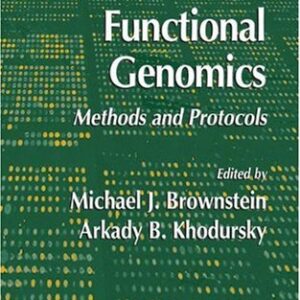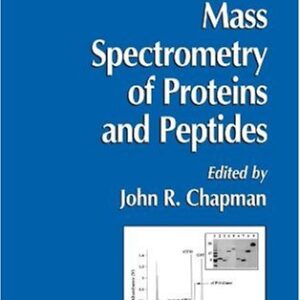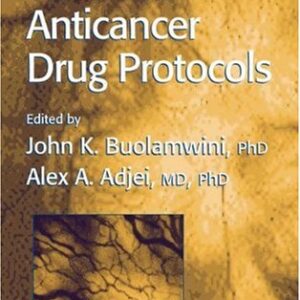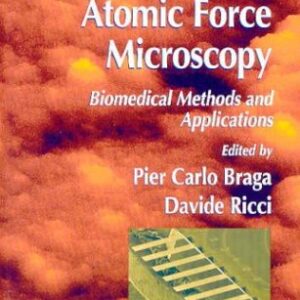Edited by the world leaders in this emerging field, this three-volume handbook is designed to become the landmark reference on this exciting new branch of chemistry and biology.
Following an introductory section, the authors discuss the use of small molecules to explore biology, discovering small molecule probes for biological mechanisms and expanding the scope of chemical synthesis. Further sections cover chemical informatics, drug discovery and systems biology, and the whole work is rounded off by the outlook and perspectives for this field.
No academic institution or pharmaceutical company can possibly miss out on this highly authoritative work.
Content:
Chapter 1 Chemistry and Biology ? Historical and Philosophical Aspects (pages 3?67): Gerhard Quinkert, Holger Wallmeier, Norbert Windhab and Dietmar Reichert
Chapter 2 Using Small Molecules to Unravel Biological Mechanisms (pages 71?94): Michael A. Lampson and Tarun M. Kapoor
Chapter 2 Using Natural Products to Unravel Cell Biology (pages 95?114): Jonathan D. Gough and Craig M. Crews
Chapter 3 Revealing Biological Specificity by Engineering Protein?Ligand Interactions (pages 115?139): Matthew D. Simon and Kevan M. Shokat
Chapter 3 Controlling Protein Function by Caged Compounds (pages 140?173): Andrea Giordano, Sirus Zarbakhsh and Carsten Schultz
Chapter 3 Engineering Control Over Protein Function; Transcription Control by Small Molecules (pages 174?197): John T. Koh
Chapter 4 Chemical Complementation: Bringing the Power of Genetics to Chemistry (pages 199?226): Pamela Peralta?Yahya and Virginia W. Cornish
Chapter 4 Controlling Protein?Protein Interactions Using Chemical Inducers and Disrupters of Dimerization (pages 227?249): Tim Clackson
Chapter 4 Protein Secondary Structure Mimetics as Modulators of Protein?Protein and Protein?Ligand Interactions (pages 250?269): Hang Yin and Andrew D. Hamilton
Chapter 5 Synthetic Expansion of the Central Dogma (pages 271?295): Masahiko Sisido
Chapter 6 Forward Chemical Genetics (pages 299?354): Stephen J. Haggarty and Stuart L. Schreiber
Chapter 7 Reverse Chemical Genetics ? An Important Strategy for the Study of Protein Function in Chemical Biology and Drug Discovery (pages 355?384): Rolf Breinbauer, Alexander Hillisch and Herbert Waldmann
Chapter 7 Chemical Biology and Enzymology: Protein Phosphorylation as a Case Study (pages 385?402): Philip A. Cole
Chapter 7 Chemical Strategies for Activity?based Proteomics (pages 403?426): Nadim Jessani and Benjamin F. Cravatt
Chapter 8 The Biarsenical?tetracysteine Protein Tag: Chemistry and Biological Applications (pages 427?457): Stephen R. Adams
Chapter 8 Chemical Approaches to Exploit Fusion Proteins for Functional Studies (pages 458?479): Anke Arnold, India Sielaff, Nils Johnsson and Kai Johnsson
Chapter 9 Diversity?oriented Synthesis (pages 483?518): Derek S. Tan
Chapter 9 Combinatorial Biosynthesis of Polyketides and Nonribosomal Peptides (pages 519?536): Nathan A. Schnarr and Chaitan Khosla
Chapter 10 Expressed Protein Ligation (pages 537?566): Matthew R. Pratt and Tom W. Muir
Chapter 10 Chemical Synthesis of Proteins and Large Bioconjugates (pages 567?592): Philip Dawson
Chapter 10 New Methods for Protein Bioconjugation (pages 593?634): Matthew B. Francis
Chapter 11 The Search for Chemical Probes to Illuminate Carbohydrate Function (pages 635?667): Laura L. Kiessling and Erin E. Carlson
Chapter 11 Chemical Glycomics as Basis for Drug Discovery (pages 668?691): Daniel B. Werz and Peter H. Seeberger
Chapter 12 The Bicyclic Depsipeptide Family of Histone Deacetylase Inhibitors (pages 693?720): Paul A. Townsend, Simon J. Crabb, Sean M. Davidson, Peter W. M. Johnson, Graham Packham and Arasu Ganesan
Chapter 13 Chemical Informatics (pages 723?759): Paul A. Clemons
Chapter 13 WOMBAT and WOMBAT?PK: Bioactivity Databases for Lead and Drug Discovery (pages 760?786): Marius Olah, Ramona Rad, Liliana Ostopovici, Alina Bora, Nicoleta Hadaruga, Dan Hadaruga, Ramona Moldovan, Adriana Fulias, Maria Mractc and Tudor I. Oprea
Chapter 14 Managerial Challenges in Implementing Chemical Biology Platforms (pages 789?803): Frank L. Douglas
Chapter 14 The Molecular Basis of Predicting Druggability (pages 804?823): Bissau Al?Lazikani, Anna Gaulton, Gaia Paolini, Jerry Lanfear, John Overington and Andrew Hopkins
Chapter 15 The Target Family Approach (pages 825?851): Hans Peter Nestler
Chapter 15 Chemical Biology of Kinases Studied by NMR Spectroscopy (pages 852?890): Marco Betz, Martin Vogtherr, Ulrich Schieborr, Bettina Elshorst, Susanne Grimme, Barbara Pescatore, Thomas Langer, Krishna Saxena and Harald Schwalbe
Chapter 15 The Nuclear Receptor Superfamily and Drug Discovery (pages 891?932): John T. Moore, Jon L. Collins and Kenneth H. Pearce
Chapter 15 The GPCR ? 7TM Receptor Target Family (pages 933?978): Edgar Jacoby, Rochdi Bouhelal, Marc Gerspacher and Klaus Seuwen
Chapter 15 Drugs Targeting Protein?Protein Interactions (pages 979?1002): Patrick Chene
Chapter 16 Prediction of ADMET Properties (pages 1003?1042): Ulf Norinder and Christel A. S. Bergstrom
Chapter 17 Systems Biology of the JAK?STAT Signaling Pathway (pages 1045?1060): Jens Timmer, Markus Kollmann and Ursula Klingmuller
Chapter 17 Modeling Intracellular Signal Transduction Processes (pages 1061?1081): Jason M. Haugh and Michael C. Weiger
Chapter 18 Genome?wide Gene Expression Analysis: Practical Considerations and Application to the Analysis of T?cell Subsets in Inflammatory Diseases (pages 1083?1117): Lars Rogge and Elisabetta Bianchi
Chapter 18 Scanning the Proteome for Targets of Organic Small Molecules Using Bifunctional Receptor Ligands (pages 1118?1139): Nikolai Kley
Chapter 19 Chemical Biology ? An Outlook (pages 1143?1150): Gunther Wess
Biology
[PDF] Chemical Biology: From Small Molecules to Systems Biology and Drug Design, Volume 1-3
$19.99

![[PDF] Chemical Biology: From Small Molecules to Systems Biology and Drug Design, Volume 1-3](https://pdfelite.com/wp-content/uploads/2024/04/38d5f7288810630257301a8657d49ed5-d.jpg)




Reviews
There are no reviews yet.